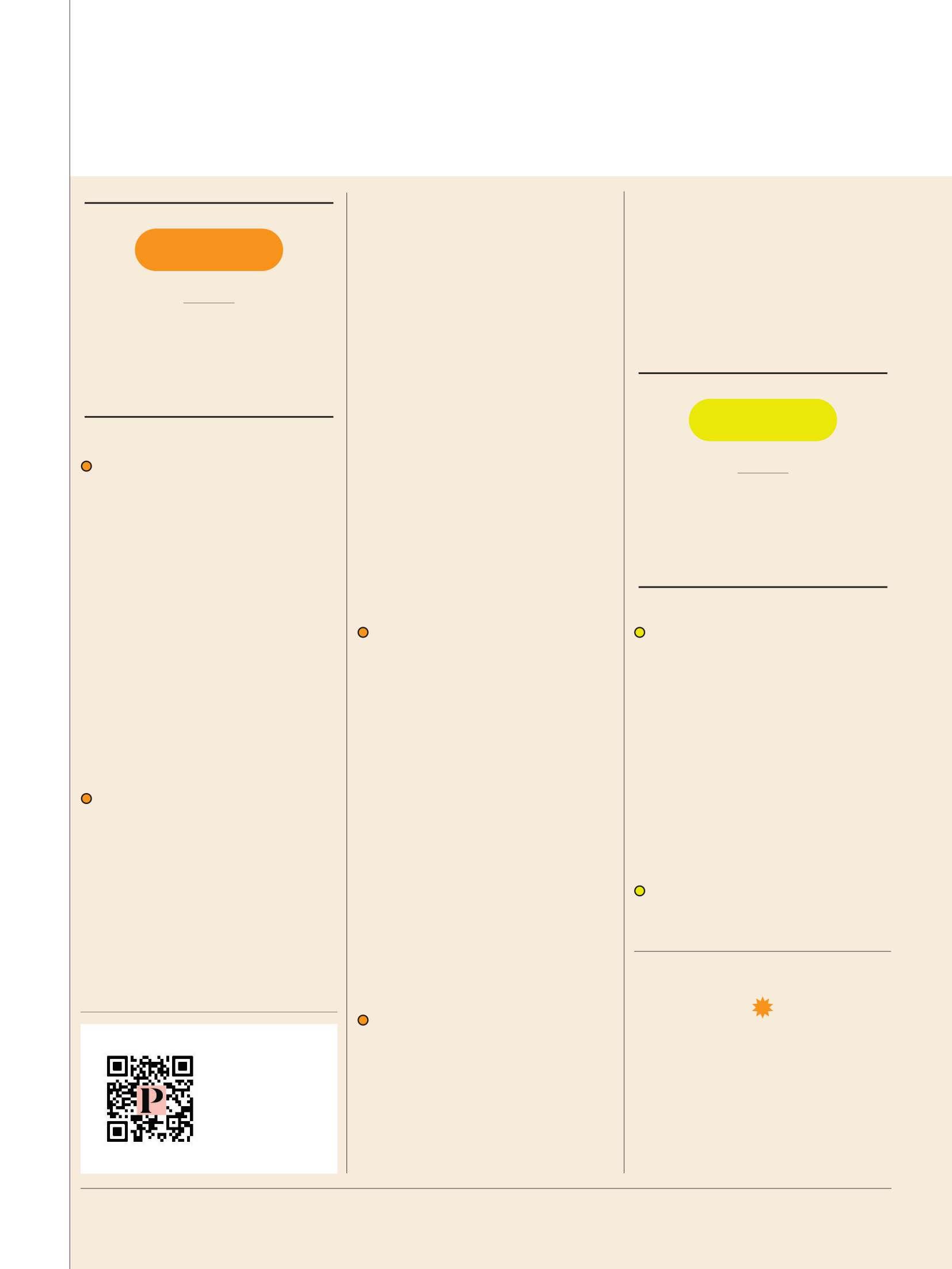
3 minute read
1–2 Years
Age s + S t age s
A D V I C E A S Y O U R C H I L D G R O W S
Advertisement
P R E G N A N C Y
H O W T O
Optimize Your Nutrition
by A D R I E N N E F A R R
Focus on variety.
Consuming a balanced diet is important to ensure your baby is receiving the nutrition they need to develop normally. Nutritious foods will also help you maintain a healthy blood sugar level and minimize the risk of gestational diabetes, which can lead to a large fetus (weighing 9 pounds or more), labor difficulties, or heavy bleeding after delivery, according to the American College of Obstetricians and Gynecologists (ACOG). So aim to prioritize high-fiber foods (such as whole grains , fruits, and vegetables) as well as lean proteins and unsaturated fats.
Be cautious about harmful foods.
There are unique food-safety issues during pregnancy. Avoid unpasteurized cheese and deli meats, since they can contain the bacteria listeria, which is dangerous during pregnancy. Think twice about raw fish; some can cause foodborne illness, so it’s best to steer clear of them. According to ACOG , you should not eat fish that are known to have high levels of mercury, such as
Get More Age-Specif ic Tips
Hover your phone’s camera over the smart code to subscribe to our daily newsletter. bigeye tuna, king mackerel, swordfish, and tilefish. Too much mercury in your bloodstream can damage your baby’s developing brain and nervous system. Limit white (albacore) tuna to only 6 ounces a week. You should also check the Environmental Protection Agency’s website for any advisories about fish caught in local waters. Making sure that your meat isn’t undercooked and garden vegetables are rinsed well is also essential, because they could contain a parasite that increases your risk of developing toxoplasmosis, a disease that can have serious effects on your infant. Also, be sure that your food is stored at proper temperatures and is discarded in a reasonable time frame. Avoid alcohol during pregnancy and breastfeeding, and minimize caffeine to less than 200 milligrams daily, particularly during your first trimester.
Structure your eating.
The concept of eating for two during pregnancy is a myth. During your first trimester, you don’t need any extra calories beyond your pre-pregnancy needs. Take in about 340 additional calories a day in the second trimester and 450 more calories a day in your third. Always check in with your doctor about the range of weight gain that will be ideal for you, based on your starting weight. When planning meals, it’s best to have three per day and two to three snacks (so that you’re eating every three hours or so). However, if you’re managing certain pregnancy-related side effects—such as ref lux and heartburn as your uterus enlarges—you may prefer to have smaller meals as frequently as every two hours.
Stay hydrated.
Drinking plenty of water can prevent kidney stones and urinary tract infections, and minimizes constipation. It also helps prevent the risk of defects related to severe maternal dehydration, like inadequate breast-milk production and even premature contractions. Your goal should be to drink eight to 12 glasses (64 to 96 ounces) per day. Don’t worry about whether you’re drinking too much, as it is hard to consume a high enough volume to cause harm.
Sources: Ricci-Lee Hotz, R.D.N., contributor at Testing.com; Parents advisor Laura Riley, M.D., chair of the department of obstetrics and gynecology at Weill Cornell Medicine, in New York City, and author of You & Your Baby: Pregnancy.
0 – 1 2 M O N T H S
H O W T O
Engage Your Baby’s Memory
by TA M E K I A R E E C E
Understand mental milestones.
Your infant’s memory muscles are hard at work from the moment of birth. At first, your baby will use procedural memory, which is responsible for motor skills like sucking, swallowing, making sounds, and eventually rolling over and walking. By 6 weeks, your newborn will begin to build semantic memory, or general world knowledge. This helps them recognize you as their parent and later to know their own name and grasp the meaning of words like dog and ball.
Build associations.
When your infant experiences something for the first time, this stimulates areas










